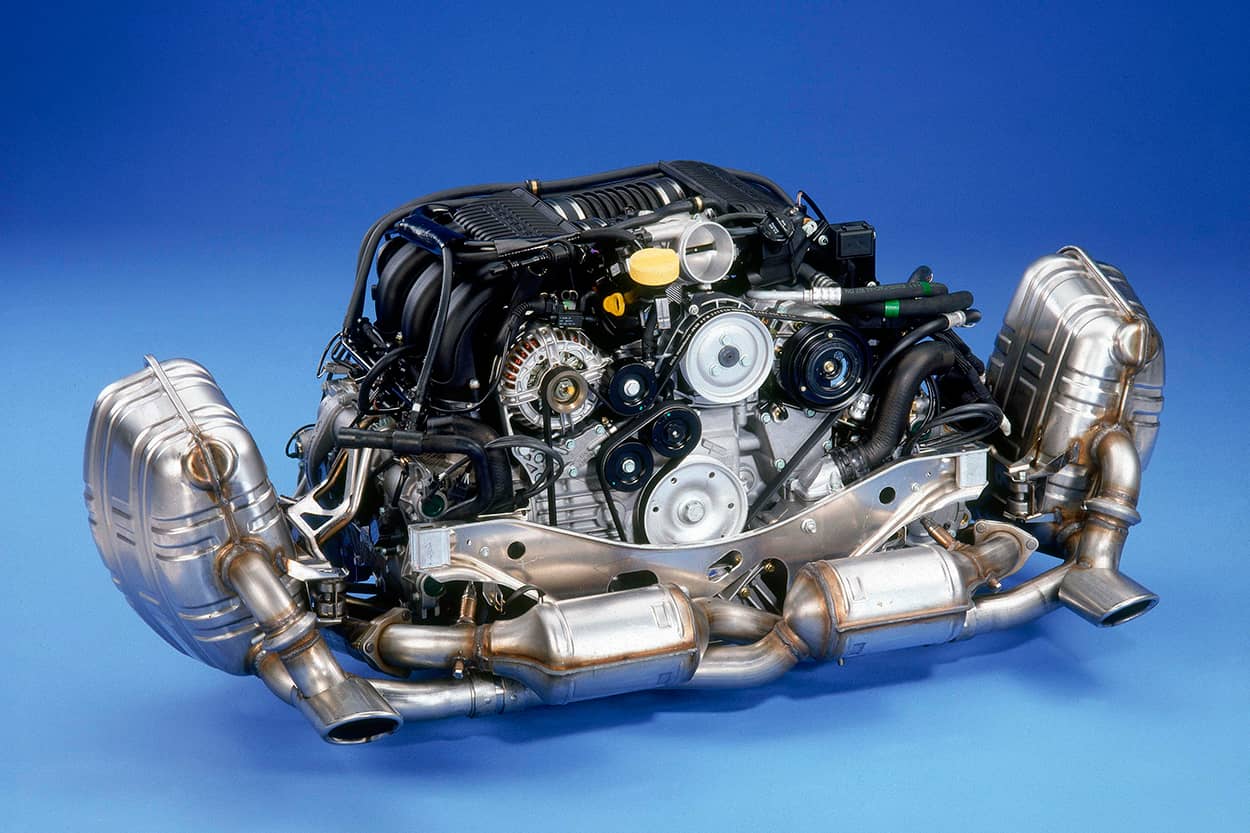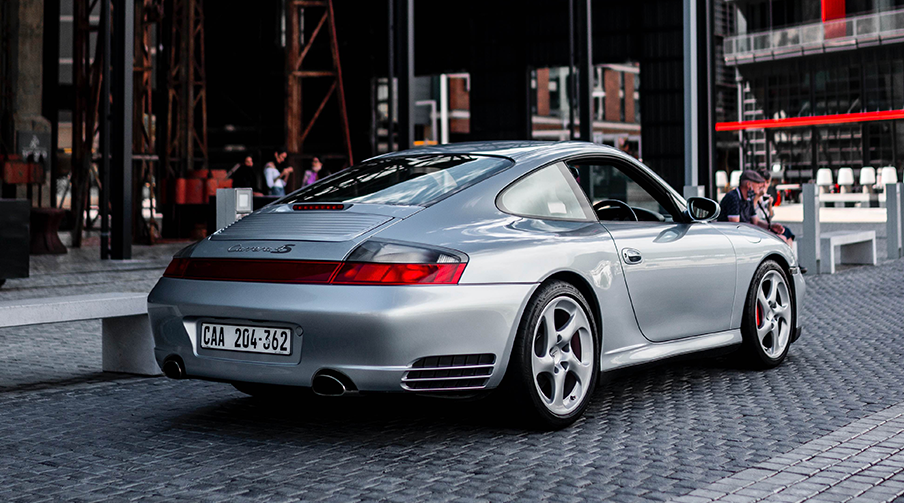
The Complete Porsche 996 Buyers Guide
A Brief History Of The 996
The 996 was the first 911 variant since the Porsche flagship range took hold over the Porsche 356 to make any particularly major design changes to the original blueprint.
The plan for the 996 had begun to be plotted by Pinky Lai in 1992 with the intention to take the Porsche 911 range comfortably into the next Millennium. Stunting an adjusted body, new interior and a never seen before water-cooled engine, you’d be forgiven for thinking the 996 had all the elements to nib the approval of the early noughties.
Ask any Porsche fan today, and you would know that the 996 is notoriously known within Porsche communities for being a major turning point for Porsche 911 model variants – not least in terms of functionality.
Utilising unique suspension and chassis in comparison to previous 911 models, the Porsche 996 received very early initial plaudit for its handling and newfound practicality; you see, up until this point, there had been almost no changes to these core handling features within the 911 variants throughout the years – it’s no surprise, then, that when these pre-1997 issues were fixed by the introduction of the 996, it was broadly welcomed.
So if the Porsche 996 was so successful at influencing the contemporary Porsche driving experience, why will you often hear people describe it as a semi-failed model?
There are many reasons as to why the 996 was rather unsuccessful in the 7 main years Porsche retained it in production; not least because several of the new features the Porsche 996 introduced were extremely unpopular.
The iconic oval shape was modified to a frame that has often been referred to as something similar to a “uniquely” cooked fried egg.
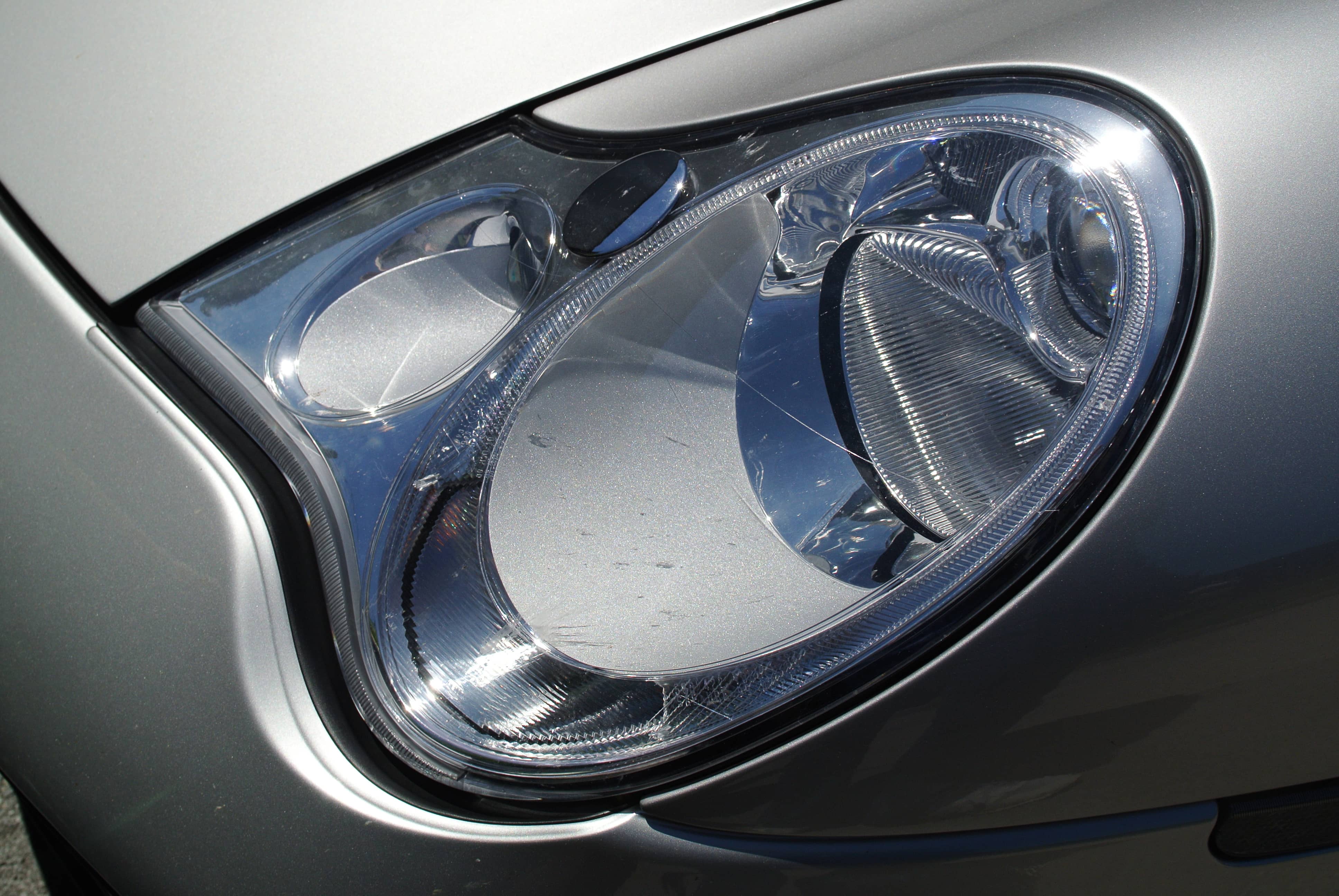
Porsche 996 “Fried-Egg” Style Headlight
While obviously not exactly something to grab your pitchfork over, the headlights provide a great leeway into unpopular non-aesthetical changes at the time.
Of course, a switch to a water-cooled engine also sparked wrath in the hearts of the 911 range devotees, however, a more serious and objectively bad flaw was its proneness to complete engine failure.
Among the manifold factors, however, one of the biggest criticisms Porsche received with the production of the 996 was its sharing of parts and production with the Porsche Boxster.
You can read the full history of the Porsche 996 here.
Why are 996 models suddenly so popular?
The Porsche 996 has, following the years of its release, been rediscovered by many Porsche fanatics and is now even referred to as a ‘hidden gem’ of a model, something that few would have foreseen during its production years.
But why is that the case?
Despite its tendency to garner criticism, especially within particular circles on the internet, it’s easy to forget that the Porsche 996 was a genuine Porsche flagship model for several years.
Even its original base model boasts pretty impressive specs, and these were only improved further with the introduction of its second generation – the 996 even substantially technically outperforms its far more popular 911 sibling, the Porsche 993, on paper.
Although it does have its faults – you can read the 996’s most common issues here – thanks to the unpopularity it saw during its time in production, the Porsche 996 has quickly become the most affordable Porsche 911 on the market.
But has it been priced at what it’s worth? When you consider the price of 911s that come from a similar era – be it the 964, 993 or 997 – two of which are technically inferior, it’s hard to argue against the notion that the Porsche 996 has become somewhat of a bargain in the modern-day automotive market.
The Porsche 996, which benefitted from numerous enhancements in comparison to its predecessor, also has some of the best handling on an older Porsche car and provides a fantastic driving experience.
Not only this, but the Porsche 996 has also seen a relatively quick and steady rise in price in recent years, potentially even making it a decent investment and providing a telltale sign that more and more people are starting to appreciate this car for what it really is (it should be noted that we are not financial advisors and thus you should do your own research if you are buying a 996 for this sole reason).
If you want to experience the grace of owning a 911, but don’t want to fork out a huge amount on a Porsche of a similar era, the Porsche 996 could be the absolutely perfect car model for you.
Which Porsche 996 Variant Is The Right Car For You?
So, you’ve decided to pick yourself up a Porsche 996 – maybe you were even convinced by the stellar arguments made above – but where do you start?
Well firstly you need to establish your budget and what you are looking for in a Porsche 996.
Are you after a first or second-generation Porsche 996 (you can read about the differences here)?
Are you after a weekend cruiser? A day-to-day driver?
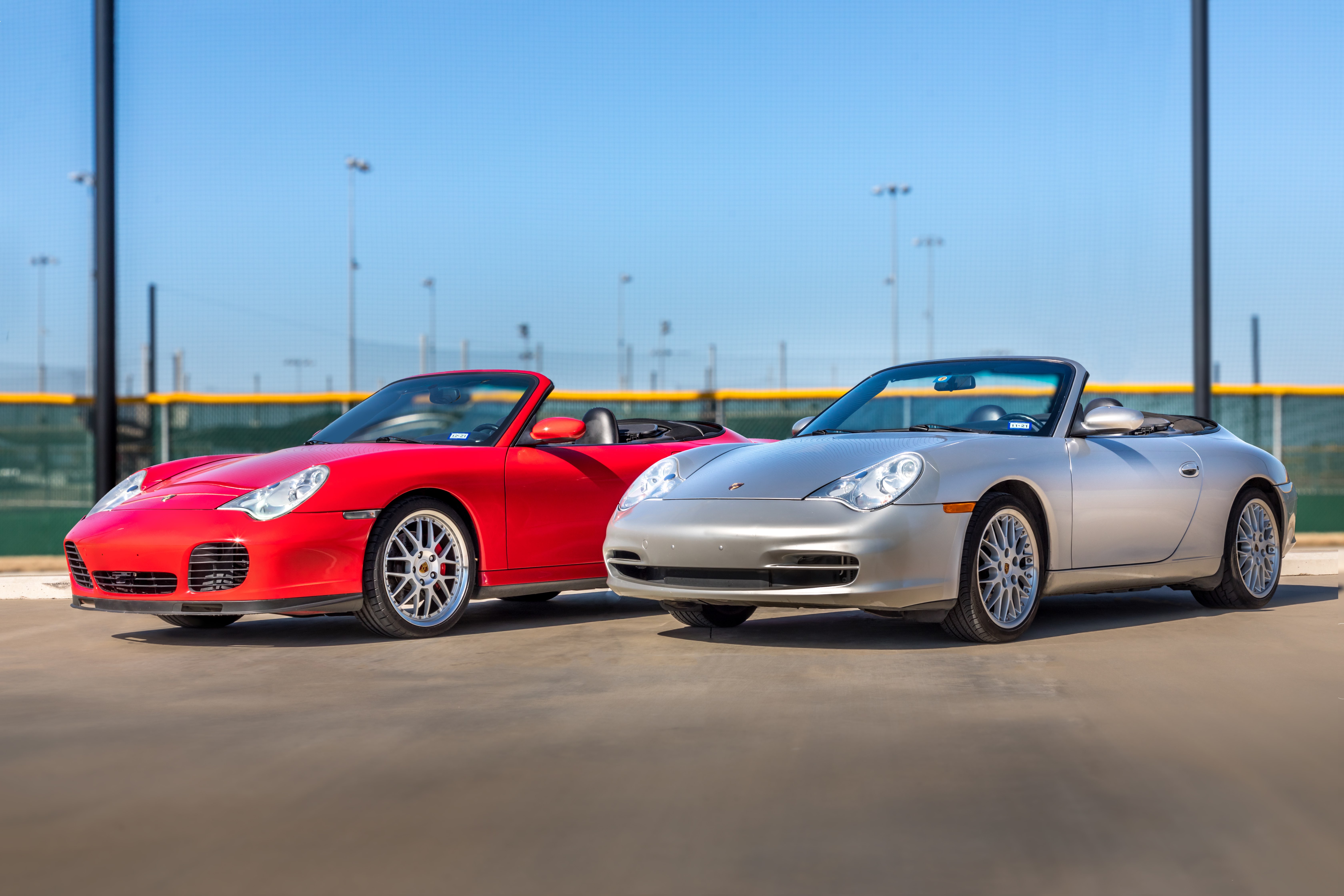
McKinney, Texas USA January 31, 20201: Photo of a red Porsche 911 turbo and a silver Porsche 911 Carrera
Depending on what your driving intentions are, making sure you pay close attention to the mileage that the 996s on the market have done is a good way of ensuring you get the right car.
Are you after a Turbo, a standard Carrera, a cabriolet, a coupé?
One of the benefits, and simultaneously frustrating things, about 911 generations is that they come in such a variety of distinctively different variants; it is, perhaps obviously, absolutely key to narrow down your selections before you enter the market with serious buying intention.
Maybe the most evident factor to consider when you look at buying a Porsche 996 is your budget. Allocating a maximum spend will allow you to narrow down your options, both in terms of variant and mileage.
At the time of writing, you can pick up a second generation Porsche 996 Carrera 4 with low mileage – relative to the age – (around 35-60k) that is in good condition for around the £20,000 mark (Autotrader has been used as market reference here, but the price will vary depending on the seller and website).
What Should You Look Out For In A Porsche 996?
General Maintenance / Service History
Both a bad service history and a lack of maintenance on the Porsche 996 can lead to some extremely costly issues.
Porsches are somewhat renowned for needing specialist service when they require work done to them, and the Porsche 996 is no different.
Ensuring that the 996 you are considering has been maintained by the proper persons, such as a Porsche specialist/expert, is key; this way you can be confident you are less likely to run into future issues that may have been missed by someone unqualified.
This goes hand in hand with general maintenance.
The 996, like many older Porsches, is susceptible to age-based wear – especially when they have been left unattended for long periods of time.
If you’re picking up a 996 that looks worse for wear and has not regularly been cared for, it’s likely you could suffer from an issue such as cylinder cracking and scoring when you do eventually get going.
Costly issues like a cracked cylinder – caused mainly by the cylinder head bolts producing excess torque which, in turn, puts pressure on the heads – can be avoided by simply ensuring you properly maintain your vehicle on a regular basis, and consistently changing your oil.
IMS Bearing Issues
The Porsche 996 saw two different IMS bearings implemented during its base running years – three if you include the ones that finished production later.
Ironically, the IMS bearing that was first produced and featured on the 996 until late 1999, is considered more reliable than its redesigned counterpart that can be found on the 2000-2004 models (also 2005 non-base models).
Despite this, it is still advised to upgrade the IMS bearing irrelevant of which year Porsche 996 you own this is because neither of them are considered suitable enough to depend on.
What happens if this part fails? Failure of the IMS bearing often leads to total engine failure, which is one of the worst possible events for any car owner to experience – not to mention it is extremely costly.
This is a critical area to examine and ask about when you look for your Porsche 996.
Damaged Rear Main Oil Seals
If you’re considering a 996 that hasn’t seen a lot of time out on the roads recently, or if your 996 hasn’t been properly maintained, it is well recommended to check your rear main oil seal.
The rear main seal acts as a tool to keep all the oil secure within the crankcase – if this oil were to leak, it would drench the transmission which would, in turn, have potentially disastrous consequences.
While a damaged rear main oil leaking isn’t an issue exclusive to Porsche 996 models, the seal that comes with 996s is susceptible to dryness.
When the seal becomes dry, it can begin to break down and eventually begin to let the oil, kept in the crankcase, seep through.
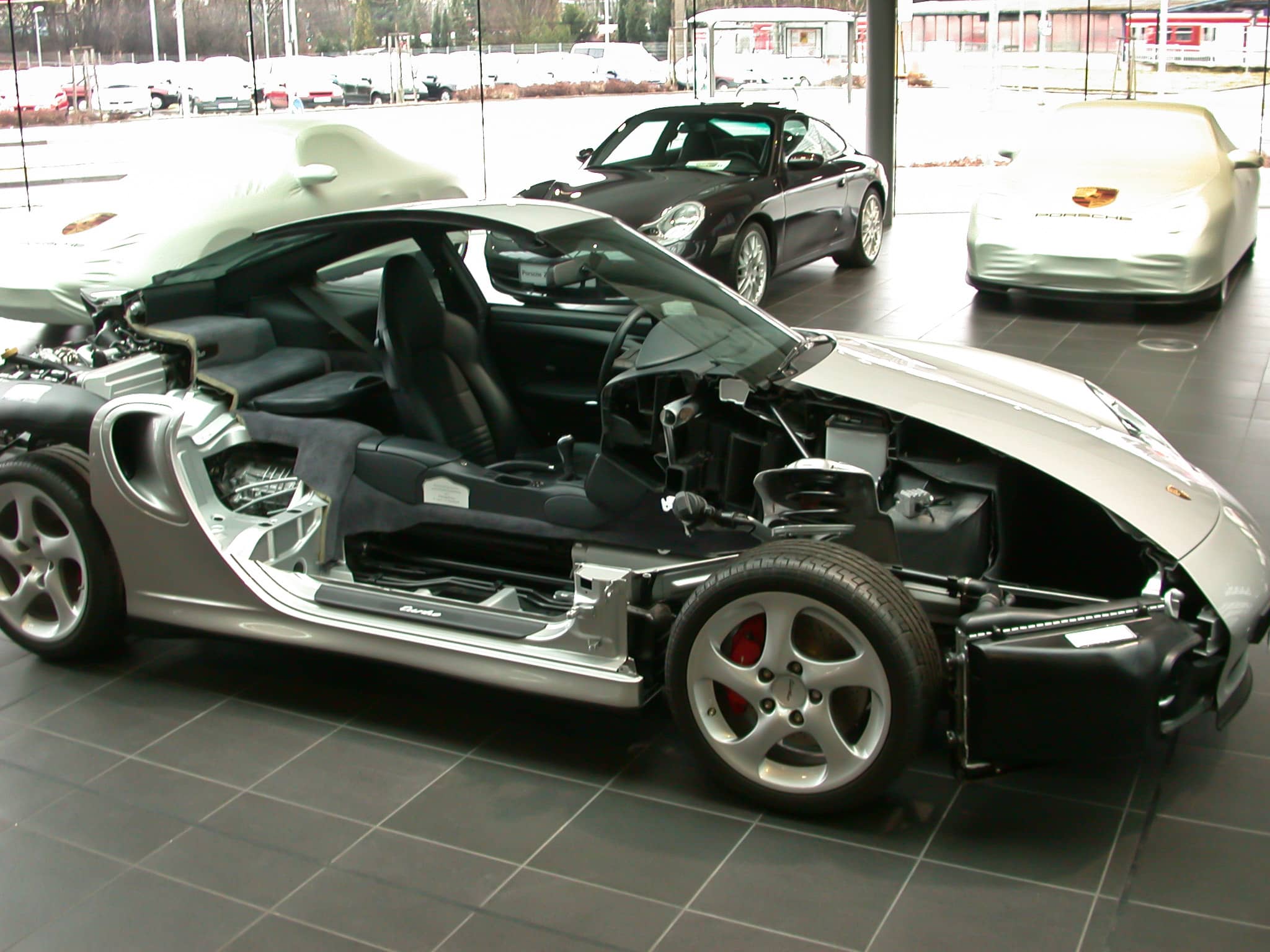
By Maximilian Schönherr – Own work, CC BY-SA 3.0, https://commons.wikimedia.org/w/index.php?curid=15685324
Look At The Mileage
We touched upon this earlier in the blog, but it is such a vital element when hunting any Porsche, especially with older models like the Porsche 996.
The mileage of the model you go for needs to align with your personal expectations of how you want your 996 to serve you.
Maybe you are less concerned about driving it often and want it more as a statement garage piece or weekend/holiday cruiser, or perhaps you want to use a Porsche 996 primarily as a car to experiment with modifications and upgrades.
In these cases, you should be more comfortable picking up a higher mileage 996 (although it should be noted, higher mileage 996s always have an increased risk of issues down the line, but the sentiment remains).
If you are in the opposite camp, someone who is looking to regularly drive their Porsche 996, you should quite obviously aim for a Porsche 996 that has as low of a mileage as possible (relative to your budget).
Look at the year of production
We also touched upon working out if you want a Gen 1 or Gen 2 Porsche 996 earlier in the blog, but it is also worth noting that the discrepancies between the models go further than specs and aesthetics alone.
Aside from the first Porsche 996 being cheaper than its second iteration, the first generation is also more likely to suffer from more issues than its 3.6-litre counterpart, and therefore may potentially be more expensive to maintain.
Smaller Issues To Look Out For
There are a lot of smaller issues that pre-owned Porsche 996s could potentially suffer from, not necessarily ones that are innate by design either, but rather due to its age and use.
These could include things such as radiator wear, wheel damage (you can click here to read our top 996 wheel upgrades) and even chassis and interior deterioration.
To be thorough when considering a 996, make sure you have done extensive research on the car and its history or, alternatively, employ the help of a Porsche specialist who can advise you on your purchase.
Further reading from us on the Porsche 996
What’s the truth about the famous Porsche 996 that divides opinion?
Lesser-Known Facts About The Porsche 996
What Are The Best Wheel Upgrades For The Porsche 996?
Common Issues That The Porsche 996 Faces With Solutions
Explained: The Differences Between The First And Second Generation Porsche 996
Final Thoughts
Despite sometimes receiving a bad rap, especially in the earlier days of its production, the Porsche 996 has very much ‘redeemed itself’ in recent years and has quickly become a fan favourite model due to it not only being ‘a classic Porsche’ but also because it is fairly accessible.
At the end of the day, the Porsche 996 is a fast, head-turning and well-driving sports car that also has a wealth of potential when it comes to modding – with that in mind, it’s fairly easy to see why it is becoming increasingly sought after.
Need parts for your Porsche 996? Visit our site here and enter your model details to see the upgrades available for your specific car.


